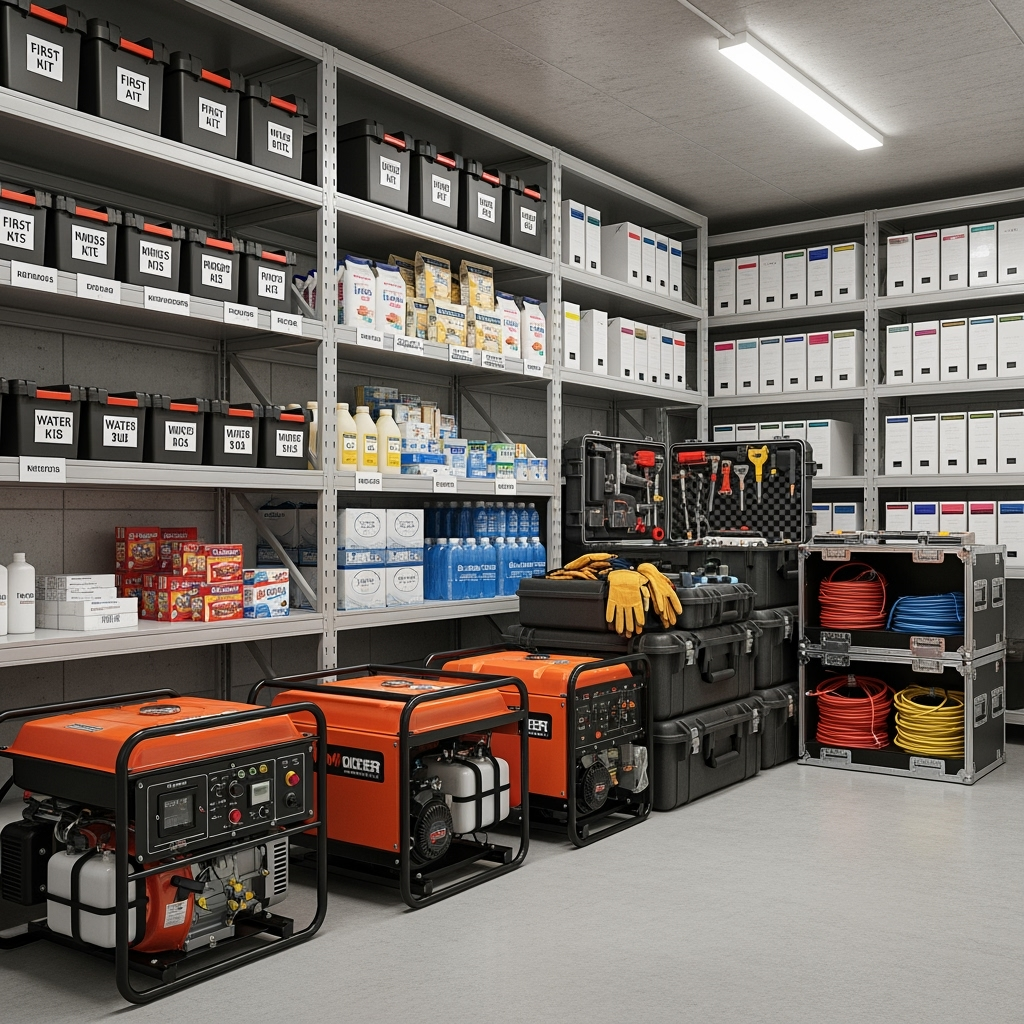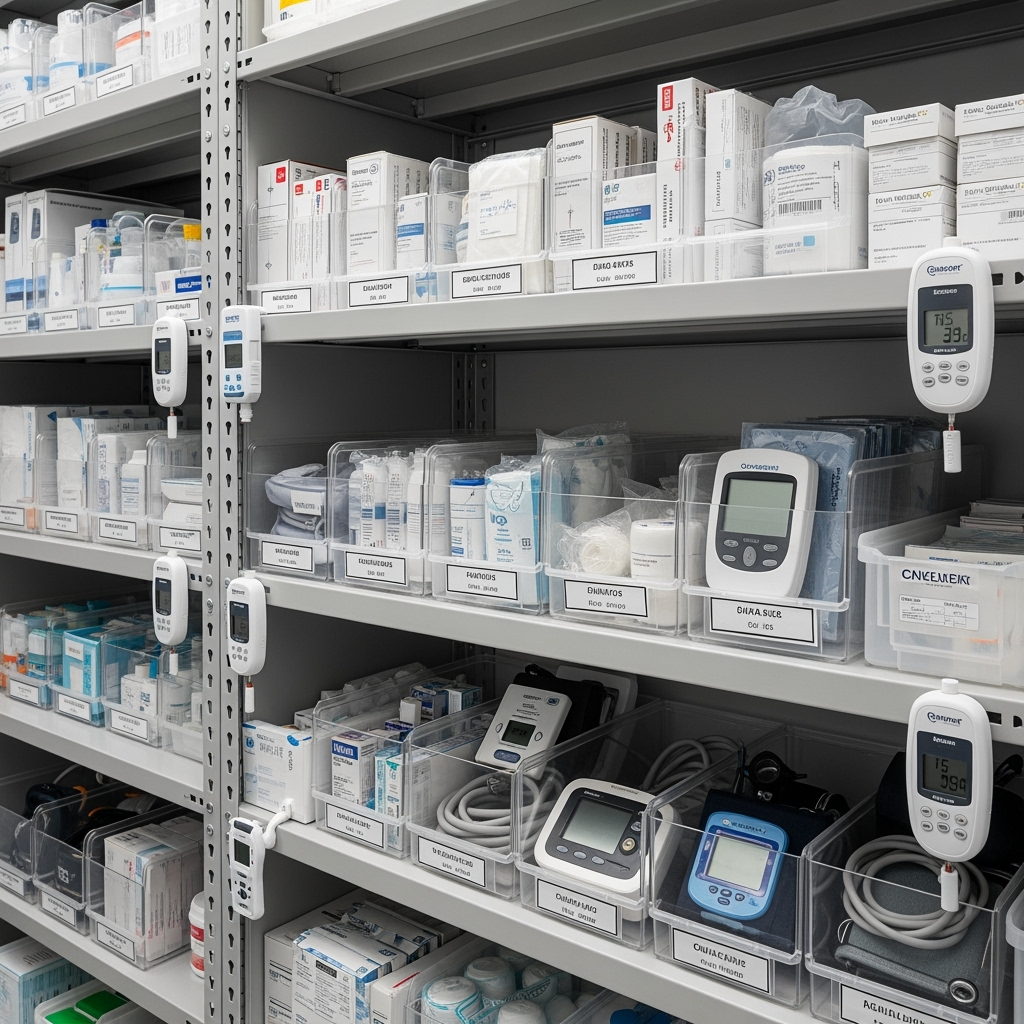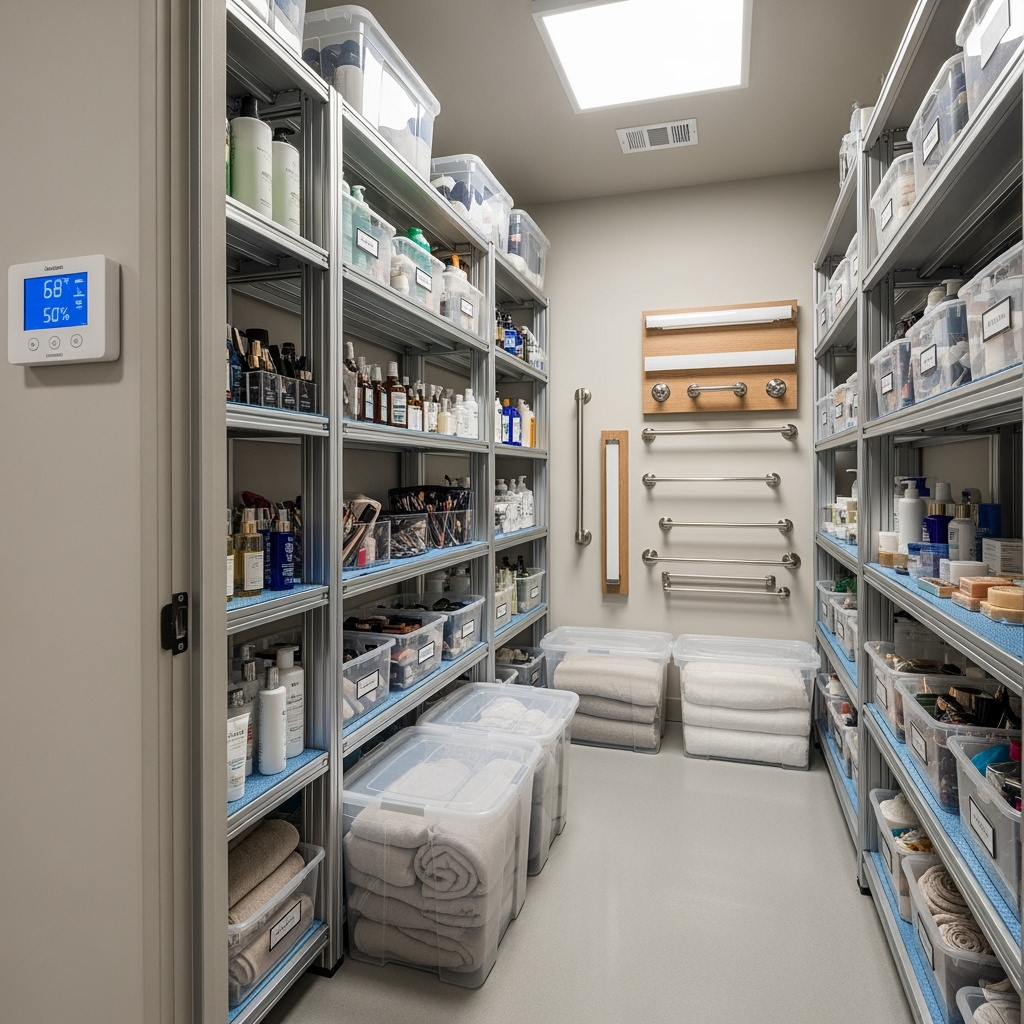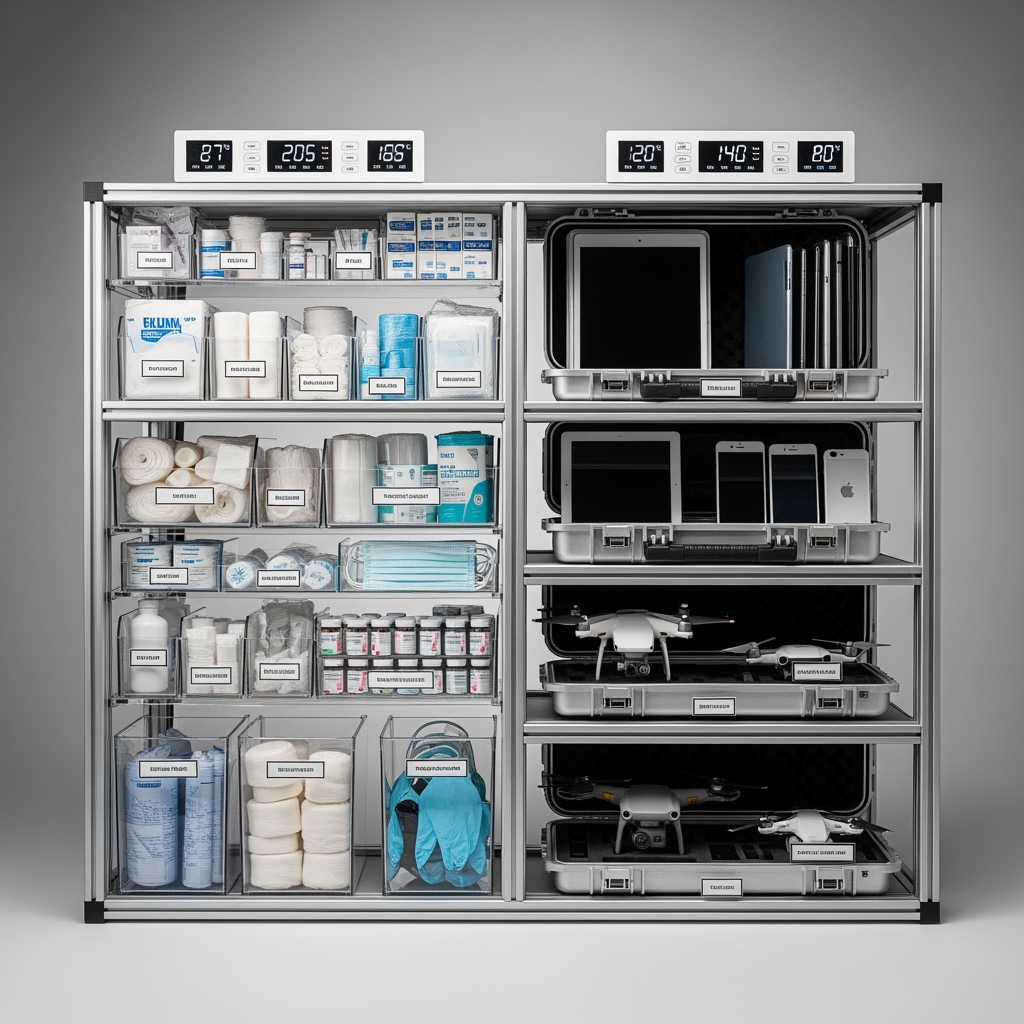When natural disasters strike, businesses need more than just insurance – they need a comprehensive plan to protect vital assets and ensure operational continuity. This guide will help you create a disaster-ready storage strategy that safeguards your business essentials.
Understanding the Importance of Disaster-Ready Storage
Natural disasters can strike with little warning, potentially devastating unprepared businesses. A well-planned storage strategy is crucial for:
- Protecting vital business documents and records
- Preserving expensive equipment and inventory
- Maintaining business continuity during emergencies
- Ensuring quick recovery after disaster events

Essential Components of Your Storage Plan
1. Document Protection
Start with protecting crucial business documents:
- Legal documents and contracts
- Insurance policies and claims information
- Employee records and payroll documents
- Tax records and financial statements
- Client data and business licenses
2. Equipment and Inventory Safeguarding
Protect valuable business assets:
- Computer equipment and electronics
- Inventory and merchandise
- Manufacturing equipment
- Office furniture and supplies
- Marketing materials and displays
Choosing the Right Storage Solution
Climate-Controlled Storage Benefits
Consider climate-controlled storage units for:
- Protection from temperature extremes
- Humidity control for sensitive items
- Prevention of mold and mildew
- Extended preservation of electronic equipment
Creating Your Emergency Access Plan
Develop a clear strategy for accessing your storage unit during emergencies:
- Maintain an updated inventory list
- Create an emergency contact list
- Document storage unit access procedures
- Establish a priority retrieval system
Storage Organization Tips
Strategic Placement
Optimize your storage unit organization:
- Place frequently needed items near the entrance
- Use elevated shelving for flood protection
- Create clear aisles for easy access
- Label everything clearly and systematically
Emergency Supply Storage
Maintain an emergency supply cache including:
- Backup power sources and generators
- Emergency lighting equipment
- Basic tools and supplies
- First aid kits and safety equipment
Regular Maintenance and Updates
Implement a maintenance schedule to:
- Review and rotate stored items quarterly
- Update emergency contact information
- Check condition of stored equipment
- Verify accessibility of important documents
Insurance and Documentation
Protect your stored items with:
- Comprehensive insurance coverage
- Detailed inventory documentation
- Regular photographic records
- Updated value assessments
Communication Planning
Establish clear communication procedures:
- Emergency contact chains
- Storage access protocols
- Recovery team responsibilities
- Vendor and supplier contacts
Recovery Planning
Create a post-disaster recovery plan including:
- Priority item retrieval list
- Business resumption procedures
- Damage assessment protocols
- Team member responsibilities
Making the Most of Your Storage Investment
Maximize your storage effectiveness by:
- Regular plan reviews and updates
- Team training and awareness
- Documentation of procedures
- Testing emergency protocols
Conclusion
A well-planned storage strategy is essential for business continuity during natural disasters. By implementing these guidelines and maintaining regular updates to your plan, you can protect your business assets and ensure quick recovery when emergencies strike. Remember, the key to effective disaster preparedness is thorough planning and regular maintenance of your storage system.










Leave a Reply